Content
The main problem with any contagious diseases in pets is that, due to living together for a long time, the microorganisms mutate and become capable of infecting other species of animals. There are already many diseases common to birds, mammals and humans. Diseases in pigeons are in most cases the same as in chickens and other poultry. This is why pigeons living near humans are dangerous. Flying into the yard to peck grain with the chickens, they infect the latter with all the diseases that they themselves suffer from. There are no chickens in cities, but many diseases of urban pigeons are transmitted to people.
What diseases do pigeons have?
To find out what pigeons are sick with, you can safely open the veterinary reference book on chicken diseases. All problems and diseases of pigeons are absolutely identical to those of chickens: from traumatic injuries to infections. The only difference is that reduced egg production syndrome in pigeons is more difficult to notice.Pigeons usually quickly get rid of non-viable eggs, and they only lay 2 eggs. Then they sit down to hatch.
Since the diseases of pigeons are identical to those of chickens, they are treated with medications intended for chickens. If these medicines even exist in nature, since many diseases of birds are not treated, destroying sick individuals. But the dosage for a pigeon should be lower than for a chicken. After pigeon mail lost its importance, no one is addressing the issue of dosage of medications for these birds.
Based on the live weight of the birds, the required dosage of medication for a pigeon in case of illness is calculated. The main signs of illness in a pigeon, like in a chicken, are a depressed state and ruffled plumage.
Pigeons may also have:
- worms;
- external parasites;
- fungal diseases.
Most often, these types of diseases affect pigeons in the winter when they are kept in crowded conditions.
Common diseases of pigeons and their symptoms and treatment
Although internal and external parasites are the most common types of disease, they can be easily treated with antihistamines and regular flea medications. True, to destroy bedbugs and ticks, in addition to pigeons, you will also have to treat the dovecote and the surrounding area.
Fungal diseases are less treatable. But on healthy pigeons the fungi are usually not activated. Here it is enough to keep the dovecote clean and feed the birds with high-quality, complete food.
In addition to parasitic diseases, pigeons are also susceptible to infections caused by viruses, bacteria and protozoa. The most common infectious diseases:
- salmonellosis;
- coccidiosis;
- smallpox;
- psittacosis;
- infectious bursitis;
- Newcastle disease;
- trichomoniasis;
- candidiasis;
- tuberculosis.
Many of these diseases are transmitted to humans. At home, treatment of diseases of pigeons and chickens should be carried out carefully. Sometimes it is easier and safer to slaughter birds and buy new stock.
Salmonellosis
It is one of the diseases of young pigeons. The causative agent of the disease is Salmonella bacteria. It enters the pigeon's body along with contaminated water and food. Also, a healthy individual can become infected through direct contact with another pigeon. Sick pigeons lay already infected eggs.
The incubation period is 1-3 days. The course of the disease in young pigeons can be:
- sharp: adynamia; drowsiness; diarrhea; serous-purulent conjunctivitis; refusal of food; seizures with convulsions, during which pigeons fall over on their backs, while their heads move erratically and their limbs make swimming movements; mortality rate more than 70%;
- subacute: rhinitis; diarrhea; serous-purulent conjunctivitis; joint inflammation;
- chronic: diarrhea and developmental delays.
The type of course of the disease will depend on the age at which the pigeon fell ill: up to 20 days - acute, 20-60/90 (sometimes adult birds) - subacute, over 90 days - chronic.
Salmonellosis is treated with broad-spectrum antibiotics, but you need to start as early as possible. In parallel, immunostimulants are used.
Coccidiosis
Refers to invasive diseases. Coccidiosis/eimeriosis is caused by single-celled parasites belonging to the coccidia subclass. Eimeria most often affects young animals.The severity of symptoms of coccidiosis in young pigeons depends on the number of parasites that have entered the intestines. With a small number of pathogens, symptoms of coccidiosis in pigeons do not appear and treatment is not carried out. If the disease is asymptomatic, the pigeon can develop immunity to eimeriosis.
Infection occurs when the dovecote is in an unsanitary condition through food and water. The causative agents of the disease can be introduced by rodents, wild birds, or the owner himself on clothes and shoes. The spread of coccidiosis is facilitated by overcrowding of pigeons in winter and high indoor humidity.
If there are clinical symptoms, then an acute course of coccidiosis is usually observed with a mortality rate of up to 100%. The incubation period is 3-5 days. Clinical signs:
- oppression;
- lack of appetite;
- thirst;
- lack of response to external stimuli.
The pigeons' plumage is ruffled. They sit, ruffled, with drooping wings. After the first signs appear, death occurs 2-4 days later.
When the first clinical signs appear, pigeons are given coccidiostats from a group that does not interfere with the development of immunity. As a preventive measure, a live vaccine against eimeriosis can be used. But we must take into account that the principle of action of the vaccine is based on the fact that a small amount of parasites will enter the pigeon’s body. The main purpose of the vaccine is to protect chickens from disease. You need to be careful when calculating the dose for a pigeon.
Smallpox
A disease common to mammals and birds. But viruses are specific to each species. In pigeons, the disease is caused by the smallpox virus, which is not dangerous even for other birds.The symptoms are the same for all birds susceptible to the disease: chickens, pigeons, canaries.
The incubation period lasts 1-3 weeks. There are 4 forms of the disease in pigeons:
- diphtheroid;
- cutaneous;
- catarrhal;
- mixed.
The symptoms of each form of the disease are very different from each other. Only the mixed form unites almost all of them.
With the cutaneous form, the pigeon can see pockmarks in the beak area and on the eyelids. With diphtheroid, films form on the mucous membranes of the nasopharynx. The films make it difficult for the pigeon to breathe, which becomes whistling. The beak is open to facilitate air access to the lungs.
The catarrhal form is distinguished by sinusitis, conjunctivitis and rhinitis. Mixed is characterized by pockmarks on the skin and diphtheroid films on the oral mucosa. The mortality rate for smallpox ranges from 15 to 60%. Pigeons that have recovered from the disease stop laying eggs.
There is no real cure for viral diseases, not only for pigeons, but also for people. So-called “antiviral” drugs are just immune stimulants. For pigeons, only symptomatic treatment of smallpox is used: the diet is enriched with vitamin A. To prevent the development of secondary infections, antibiotics are added to the feed. To prevent pigeons, they can be vaccinated with a live smallpox vaccine.
Psittacosis
Bacterial disease caused by chlamydia. Dangerous not only for pigeons, but also for people. The incubation period is 6-17 days. At the initial stage, psittacosis is expressed in refusal to feed and apathy.
The disease can occur in 2 forms: acute and atypical. The acute form primarily affects the respiratory system. With atypical lungs, the lungs are not affected, but all other body systems are affected.
Symptoms of psittacosis:
- blurred vision;
- the appearance of rings around the eyes;
- the appearance of mucus on the eyeball;
- with the further development of the disease, the mucus is replaced by pus;
- feathers around the eyes fall out;
- decreased appetite;
- exhaustion;
- apathy sets in;
- when the lungs are affected, a severe cough appears;
- breathing becomes loud and clear;
- diarrhea appears;
- at the last stage the central nervous system is affected.
At the final stage of the disease, paralysis is observed in the pigeon.
Psittacosis is treated with antibiotics. And treatment needs to start at an early stage. The veterinarian must prescribe the antibiotic and determine the dosage. Ornithosis responds well to treatment at an early stage, but at a late stage the prognosis is unfavorable.
Gumboro
Exotic Gumboro disease is also known as:
- infectious bursitis of chickens;
- infectious nephrosis of birds;
- avian nephroso-nephritis syndrome;
- infectious bursitis;
- infectious bursal disease;
- IBB.
It affects both chickens and pigeons. Young animals aged 2 weeks and older are most susceptible to the disease.
When you have IBD, the following become inflamed:
- bursa of Fabricius;
- joints;
- intestines.
The disease causes kidney damage. Birds develop diarrhea and intramuscular hemorrhages. Pigeons that have recovered from the disease are 8-11 days behind their non-sick peers in development.
The disease is caused by an RNA virus that has recently been isolated into a separate family. In addition to delays in development, viruses of this group also lead to the appearance of edema and foci of necrosis in the liver.
The incubation period for the disease is 36-48 hours. The flow can be acute and hidden. In acute cases, the virus quickly spreads among birds, affecting 100% of the population. Symptoms of acute course:
- diarrhea;
- sudden refusal of food;
- shiver;
- depression;
- loss of ability to move;
- signs of central nervous system damage.
Then exhaustion develops. The droppings become watery and white. Within 3-5 days, all pigeons in the flock become ill. The usual death rate is 5-6%, but sometimes more than 40% die. Death occurs in a state of prostration.
The hidden course of infectious bursitis is more common, since the effect of the virus is not noticeable. With this form of the disease, only signs characteristic of secondary infections can be noticed. Indirect signs of the latent course of IBD:
- atypical course of other viral and bacterial diseases;
- insufficient resistance against Newcastle disease (whirlworm) and Marek's disease.
Treatment for Gumboro disease in pigeons has not been developed and their support with folk remedies in this case is completely justified. Exhaustion and dehydration in pigeons occurs not only as a result of loss of appetite, but also due to diarrhea. To treat diarrhea in pigeons, you can drink astringent decoctions from oak bark, hawthorn, chamomile and other folk remedies. A sick pigeon will have to be fed semi-liquid porridge, since due to intestinal inflammation it will not be able to digest solid grain.
Twirly
This is the common name for Newcastle disease, also known as pseudoplague. This disease received this name because the virus affects the central nervous system, and the pigeon begins to have convulsions. At the initial stage, the pigeon exhibits an unsteady gait and apathy. On the second, one of the signs of Newcastle disease in a pigeon is liquid green droppings. At the same stage, brain damage develops, due to which the pigeon begins to turn its head. At this time, the owner usually notices the “spin.”At the third stage, the pigeon becomes paralyzed, it falls on its back and dies.
The disease has 4 types of course. With all types of the disease, pigeons experience a runny nose. Birds keep their beaks open because their nostrils are clogged with dried mucus. The only case of absence of not only a runny nose, but also other signs of the disease is the atypical form of Newcastle disease. With this form there are no clinical signs.
Birds don't get colds. A runny nose is always a sign of some disease. Most often infectious.
The disease, which is very contagious for birds, only causes a runny nose in humans. If the owner of a dovecote is not afraid that the entire livestock will die, he can try to cure a sick pigeon. But usually this doesn't make sense.
Trichomoniasis
An invasive disease caused by a protozoan microorganism. Trichomonas have the ability to remain active in the aquatic environment for a long time. These protozoa are constantly present on the mucous membranes of the oral cavity in birds and mammals. At the same time, “non-sterile” immunity is formed in living organisms, thanks to which the disease does not develop into the clinical stage. Trichomoniasis manifests itself in two cases: when the immune system is weakened and a large number of protozoa enter the body.
Freshly hatched pigeons are infected by adults when feeding the young with goiter milk. In adults, infection can occur through the so touching “kiss” or through drinking water contaminated with parasites.
Sand contained in low-quality food injures the mucous membranes and facilitates the penetration of the pathogen into the blood. The form of the disease and its severity depend on the virulence of the Trichomonas strain and the strength of the pigeon’s immunity.
Chicks usually become ill 4-20 days after hatching. It is typical that the worse the conditions of keeping and feeding, the more often pigeons become infected, and the more severe the disease.
The division into forms of trichomoniasis is arbitrary, since the protozoa often affects several body systems at once. Trichomoniasis can be:
- diphtheroid;
- intestinal;
- cicatricial.
With the diphtheroid form, dense yellow films form in the oral cavity, blocking the access of air. Due to the inability to breathe, pigeons become lethargic. They sit motionless in the nest with their wings down. The beak is open in an attempt to increase the breathing channel. Birds are not able to fly, as they begin to suffocate in flight. The plumage can be glued together if the pigeon is no longer able to clean itself.
With the intestinal form, pigeons experience an upset stomach. The droppings are liquid, with an unpleasant odor and putrid color. The intestinal form most often affects pigeons older than 1 month. The disease is severe and often ends in death. At autopsy, trichomoniasis lesions are visible in the liver.
The scar form is characterized by the appearance of compactions on the skin: small nodules of yellow-brown color. From the nodules, the protozoa penetrate deep into the body and infect internal organs.
Treatment of the disease is carried out with trichopolum diluted in water. The antibiotic is given in a course.For adult pigeons, 3 g of the drug is diluted in 1 liter of water; for young pigeons, the solution is soldered from a pipette.
Emaciated individuals with lesions of the pharynx and internal organs always die.
Candidiasis
A fungal disease that affects immunocompromised pigeons. Candidomycosis is caused by yeast fungi. An outbreak of the disease is most likely due to unsanitary conditions in the dovecote. The breeding ground for fungi is droppings. Pigeons usually have very dirty nests, and the chicks still have weak immunity. For this reason, young animals are most susceptible to candidomycosis.
The disease manifests itself with a wide variety of symptoms. Candidomycosis has 3 forms:
- intestinal;
- pulmonary;
- cutaneous
All 3 forms can be found in any living organism, but in birds the intestinal form is the most common.
The incubation period lasts 3-15 days. The duration depends on the body's resistance. In pigeons the course of the disease is acute. Sick birds are depressed and prefer to stay together. No appetite. Diarrhea often develops.
Since the gastrointestinal tract is usually affected, the goiter swells. On palpation, the consistency of the goiter resembles plasticine. You can feel a strong thickening of the goiter walls. There is pain. Due to the fact that the goiter is inflamed, gastrointestinal distress in pigeons is characterized not only by diarrhea, but also by vomiting. The bird often stretches its neck and yawns. Pigeons die on days 3-8 not because of a fungus, but as a result of a general septic process.
Only mild cases of the disease are treated. Birds are fed the antibiotic nystatin mixed with curdled milk. The antibiotic dose is 25-50 mg/kg live weight.The course of treatment is 10 days. If the flow is severe, the pigeons are destroyed.
Tuberculosis
The disease is common to mammals and birds. Tuberculosis in pigeons is caused by an avian strain of bacteria, but the problem is that it is possible to infect humans or mammals with pathogens that are unusual for them. That is, a person may well become infected with avian tuberculosis.
Tuberculosis in pigeons is chronic. The appearance of clinical signs means that the bird has been sick for a long time. In its generalized form, the disease is manifested by a decrease in egg production and atrophy of the pectoral muscles.
Clinical form:
- diarrhea;
- yellowness of the skin and mucous membranes due to liver damage.
Lameness and tumor-like growths on the soles of the paws are sometimes observed.
Tuberculosis cannot be cured. An attempt to cure the disease with folk remedies throughout the existence of mankind has not yet helped anyone, but it has often led to infection of other birds, as well as people.
Eye diseases in pigeons
Eye diseases in pigeons are rarely caused by non-infectious causes. This is usually one of the symptoms of a contagious disease. Before treating just the eyes, you need to make sure you don't need to treat smallpox, salmonellosis, or another similar disease. Rarely, non-contagious causes of eye diseases also occur, although in any case, an eye problem is only a symptom.
Vitamin deficiency A
Pigeons obtain provitamin A by eating grain feed and fresh herbs. Since the vitamin degrades if not stored properly, pigeons may suffer from vitamin A deficiency.With vitamin deficiency in birds, exhaustion, mucus in the nose and eyes, and inflammation of the mucous membranes of the eyes are observed. With further development of the disease, blindness occurs.
Young pigeons are developmentally delayed. Juvenile molting slows down. Pigment disappears in the beak, legs and iris of the eyes. In severe cases, the birds die.
Treatment is carried out by introducing vitamin A into the diet. It makes no sense to treat only the eyes. Symptomatic treatment will alleviate the pigeon’s condition and protect the mucous membranes of the eyes from secondary infection.
Conjunctivitis
The disease is often caused by various infections, but there are other causes of conjunctivitis:
- smoke;
- caustic substances;
- dust;
- mechanical injury;
- foreign substances.
This is the case when only the eyes can be treated, protecting them from secondary infection. But the main method of treatment is to eliminate the cause of the disease.
Signs of non-infectious conjunctivitis:
- swelling of the eyelids;
- photophobia;
- excessive tearing at the beginning of the disease;
- thick pus in the eyes in a neglected state;
- pus can stick together the eyelids and accumulate between the eyeball and the eyelids;
- in the absence of help, a perforation of the cornea occurs.
The most common cause of conjunctivitis in a dovecote is a large amount of droppings. Dried droppings begin to gather dust; wet droppings decompose, releasing ammonia that is corrosive to the eyes.
Xerophthalmia
Symptoms of the disease are dryness of the conjunctiva and cornea caused by damage to the lacrimal glands. Tears stop releasing and moistening the eyes. Metabolism in the cornea is disrupted. With further development of the disease, the cornea thickens greatly. The disease can have many causes, one of which is vitamin A deficiency. Before treating xerophthalmia, the cause of the disease must be established. Perhaps it's an infection.
Wing diseases in pigeons
In addition to traumatic (wing fracture) injuries, pigeons often suffer from inflammation of the joints. The symptom of the disease in pigeons is bumps on the joints of the wings. The disease often begins with the elbow joint. If left untreated, the shoulder also becomes inflamed. A common sign of illness caused by any of the reasons is wing drooping and poor flight in the pigeon.
There may be several reasons for the appearance of cones:
- advanced salmonellosis;
- uric acid diathesis/gout;
- excessive loads on young racing pigeons.
Salmonellosis in its advanced form is characterized not only by inflammation of the joints, but also by severe conjunctivitis, so it is difficult to confuse it with other diseases.
Uric acid diathesis
Today, gout is in third place in terms of prevalence after hypovitaminosis and nutritional dystrophy. Old pigeons are more likely to suffer from gout; this disease is not typical for young pigeons. But today this disease is increasingly being diagnosed in young pigeons.
Causes of gout:
- table salt poisoning;
- poisoning by mycotoxins contained in moldy feed;
- poisoning with pesticides;
- disturbance of mineral and protein balance.
The liver is responsible for removing toxic substances. In birds, the work of the kidneys and liver is closely related. Disturbances in one organ lead to problems in another.
Diathesis cones on the wings differ from salmonella in that they usually open on their own. Exudate flows out of them.
Gout can be visceral, articular or mixed. With visceral joint damage does not occur. This form is easily confused with some infectious diseases:
- white diarrhea;
- oppression;
- decreased appetite;
- ridge cyanosis.
With the visceral form, there is a high percentage of deaths.
The articular form occurs chronically:
- swelling of the joints;
- movement disorder;
- gray-white coloration of the skin of the affected joints;
- opening of abscesses.
Treatment is possible only in the initial stages of gout. It is carried out by feeding sick pigeons a 2% solution of baking soda, a solution of methenamine 0.25% and a solution of Novatophan 3%.
Overvoltage
A common problem with young sport pigeon breeds. Seals form on the elbow joints of the wings. It is necessary to exclude serious diseases that caused inflammation of the joint. If the cause of the disease is too much strain on the wing, the pigeon is placed separately, training is canceled and additional vitamins and microelements are fed. As an adjuvant, drugs intended for the treatment of articular rheumatism are rubbed into the joint. After 2-3 weeks of rest, the pigeon recovers.
Goiter diseases in pigeons
The causes of goiter in pigeons can be:
- candidiasis;
- bacterial infection;
- trichomoniasis;
- poisoning;
- mechanical damage;
- insufficient watering;
- mechanical obstruction.
When a pigeon's crop is infected, other signs of the disease usually present. If there are no such signs, then the nature of the goiter disease is non-infectious.
Poisoning
There is a belief that even rat poison does not kill pigeons, but they can also be poisoned. Birds are being poisoned:
- poor-quality feed: moldy or containing toxic chemicals;
- reagents used by utilities;
- slightly soluble fertilizers.
Since the pigeon is capable of regurgitation, the main symptom of poisoning is profuse vomiting. It may appear even after drinking plain water. Depending on what poisoned the pigeon, the vomit may have no odor, but may smell like liver or a toxic chemical.
Treatment is carried out with sorbents intended for humans. Medicines are given frequently. A single dose of solution is 2-4 ml, gel – a pea-sized amount. Drinking water unlimited.
A new portion of the sorbent is soldered after each case of vomiting. If the pigeon's condition improves after the last vomiting with sorbent, the bird is watered 2 more times with an interval of 1.5-2 hours. During desoldering, the pigeon is not fed. Food is given only 12-16 hours after the end of vomiting.
Mechanical damage
Occurs when a pigeon swallows solid particles: glass, metals, sharp pebbles. Since the food passes through practically without interference, vomiting is rare. Vomit is odorless or smells like blood. Treatment is only possible surgically: dissection of the goiter and removal of the foreign object. After surgery, pigeons are given antibiotics to prevent infection.
Lack of water
If the pigeon does not have free access to water, dry food clogs the crop. After drinking water, the food will become soggy and pass further into the stomach. No specific treatment is required.
Mechanical obstruction
May be caused by:
- whole grains;
- viscous feed;
- soft, theoretically inedible objects (pieces of foam, cotton wool, etc.);
- worms.
A symptom of mechanical blockage is vomiting and the absence or scarcity of droppings. Sometimes, instead of droppings, the pigeon secretes only a whitish liquid.
When clogged with grain or bread, there is enough moisture in the crop for the food to ferment. With this development of the disease, the goiter in pigeons swells. A gas with a sour odor comes out of it. The goiter hangs down.
Before determining the method of treatment, you need to understand what exactly caused the blockage of the goiter:
- viscous food and soft inedible pieces: the crop is soft, sometimes resembling plasticine (bread) in consistency;
- dry, poorly soaking food: the crop is very hard;
- Wormism: there is regular food in the crop.
If there is a blockage with viscous food, 2-5 ml of water is forcibly poured into the pigeon’s crop every hour. After a maximum of 5 hours, the problem usually resolves itself. If the crop is not cleared, 4-10 ml of water is poured into the pigeon, the crop is carefully kneaded and the contents are squeezed out through the mouth or pumped out using a catheter.
Rinsing is done until the contents of the pigeon's crop are completely removed. During the washing process, it is determined what exactly the goiter is clogged with.
When clogged with dry food or inedible soft pieces, the pigeon is first forced to drink 2-4 ml of water. After 10-20 minutes, 0.5-1.5 ml of Vaseline oil is injected and the goiter is massaged. The procedure is repeated every 1.5-2 hours until the goiter is completely freed.
It is not absorbed by the pigeon’s body and comes out unchanged. You cannot replace petroleum jelly with vegetable or castor oil, since the latter harm the bird’s liver.
When the gastrointestinal tract is blocked by worms, they can only treat it with petroleum jelly. After intestinal patency is restored, a day later the pigeon is given antihistamines.
If the patency of the goiter has not been restored, a surgical solution to the problem is possible.Some folk craftsmen simply pour water into the pigeons, then turn the birds upside down, holding them by the paws. Under the influence of gravity, the food falls out of the beak. But the method is extreme and it is better not to use it if you can consult a veterinarian. If the problem is only very dry food, it is better to give the pigeon some water, leave the drinking bowl full and let the bird sort out the issue on its own. Most often, the food gets wet and passes into the stomach on its own.
Prevention of diseases in pigeons
In advanced cases, pigeon diseases usually cannot be treated. To prevent the spread of infections, the most effective preventive measure is cleanliness in the dovecote. Most pathogens of infectious diseases are transmitted through the droppings of infected birds, while others (fungi) multiply in droppings. In addition to yeast fungi, black mold also grows in droppings. In a dirty room, pigeons, in addition to candidiasis, often become ill with aspergillosis.
The second preventive measure is a nutritious diet. A pigeon that does not lack vitamins and minerals is even less susceptible to infectious diseases.
In some cases, pigeons can be vaccinated. Provided there is a vaccine for the disease.
The dovecote and bird care items must be disinfected regularly. You can use a 2% bleach solution, but this substance is poisonous. A 3-4% solution of soda ash, heated to 40 °C, also gives a good effect.
Conclusion
Diseases of pigeons are the same as those of chickens. An outbreak of an epizootic on a poultry farm often destroys the entire population, causing significant economic damage to the owner. In dovecotes the number of pigeons is smaller, but these birds often cost tens of times more than the most exotic breed of chickens.Especially racing pigeons. But compliance with sanitary rules and a nutritious diet significantly reduce the likelihood of an outbreak of an infectious disease.
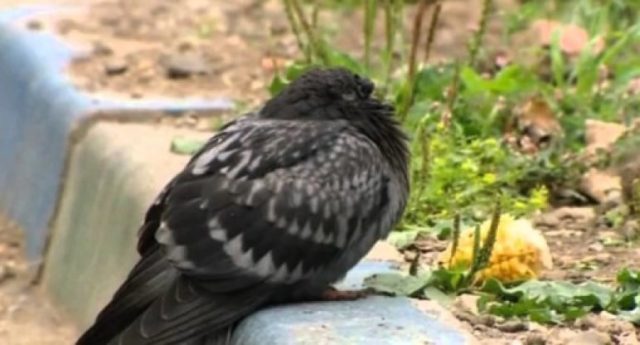
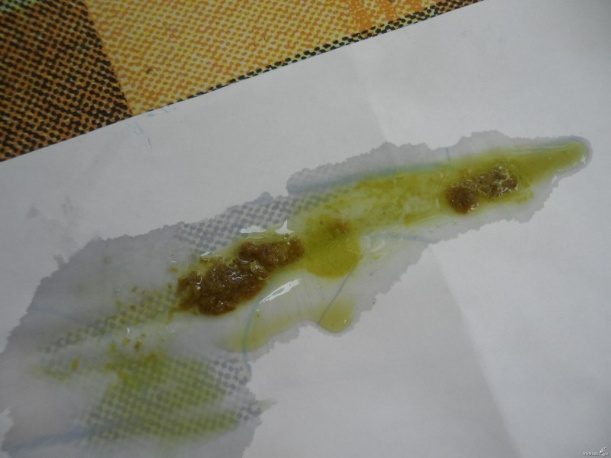
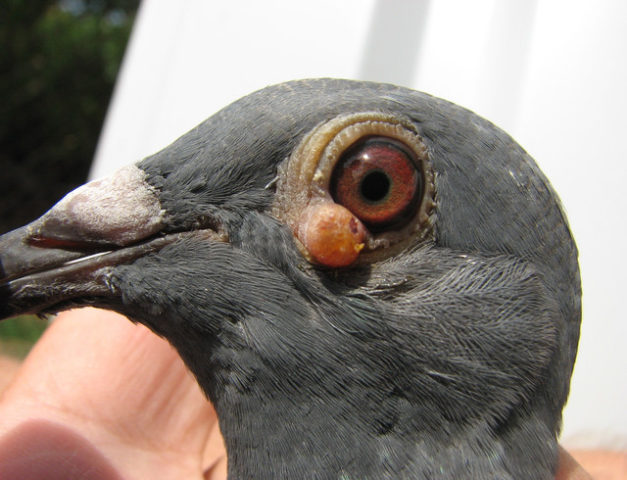
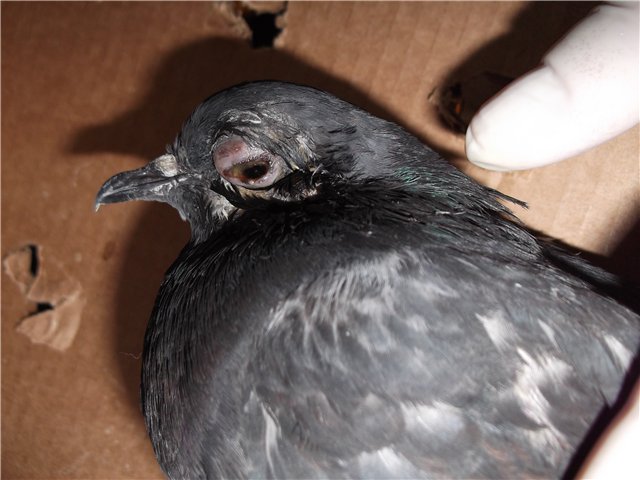
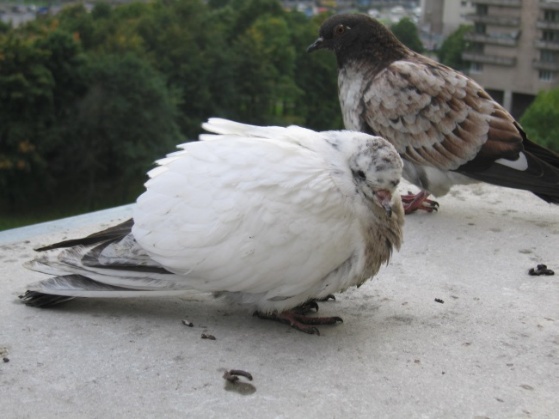
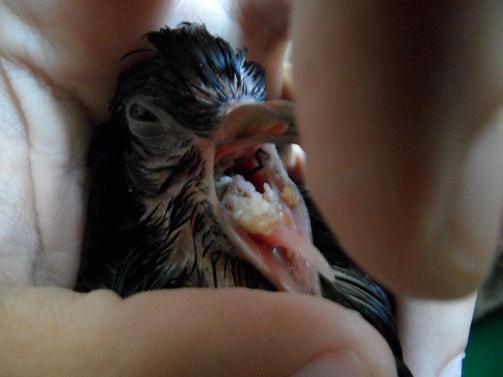
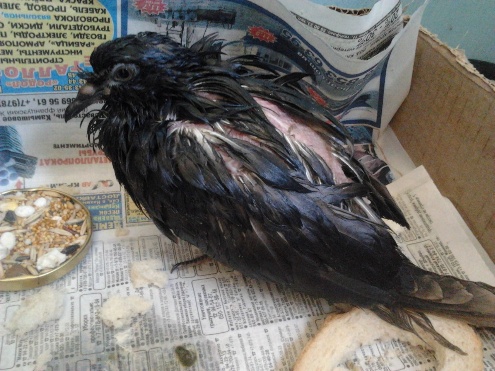
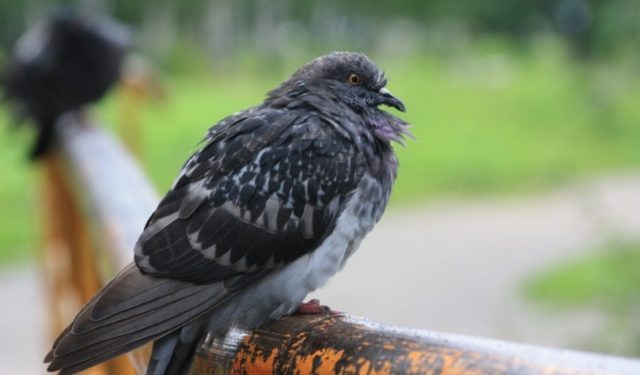
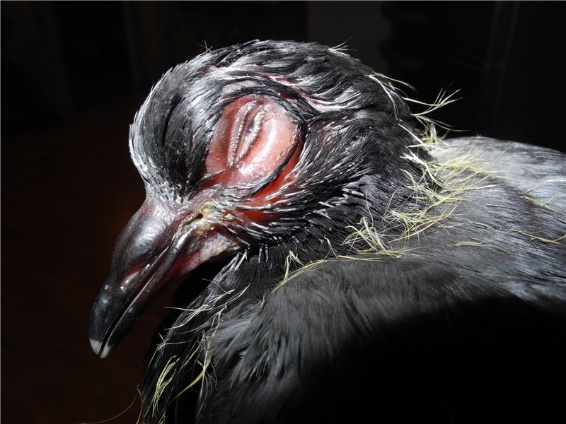
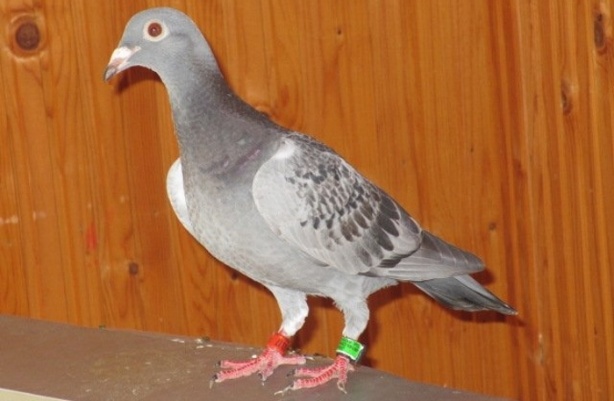
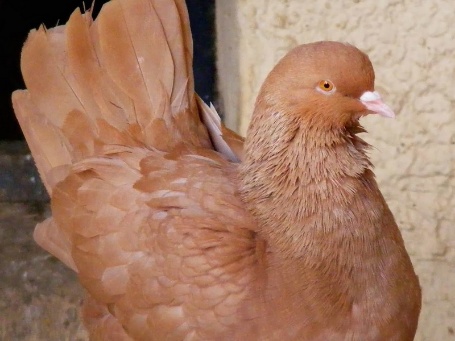
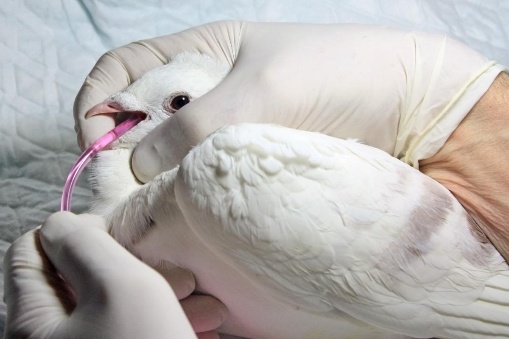
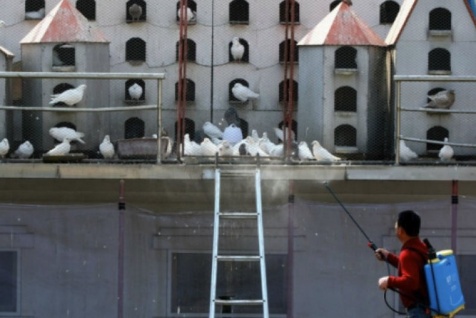
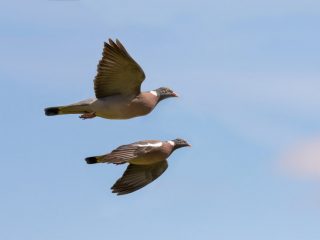
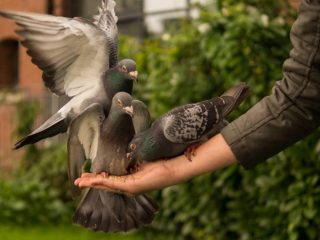
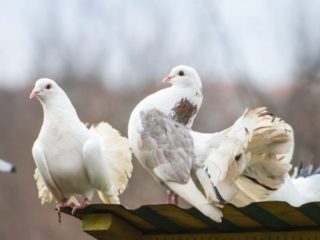
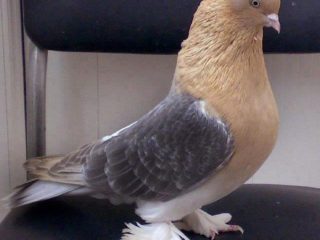
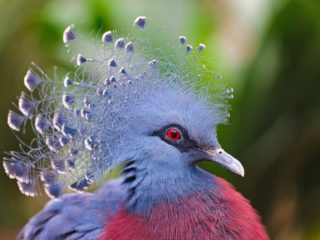
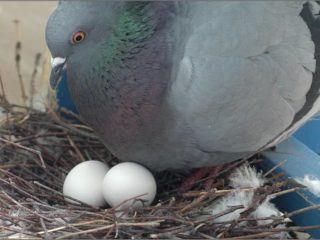
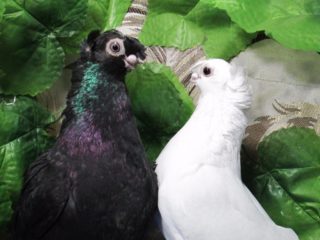
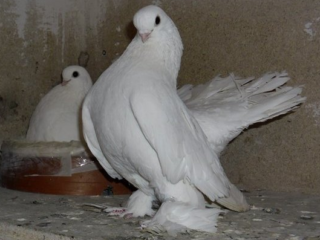
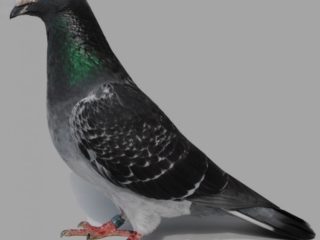
Thank you! Thanks to your article, I was finally able to understand what ails my pigeon and how to treat it. Even the veterinarian refused us; he could not make the correct diagnosis.